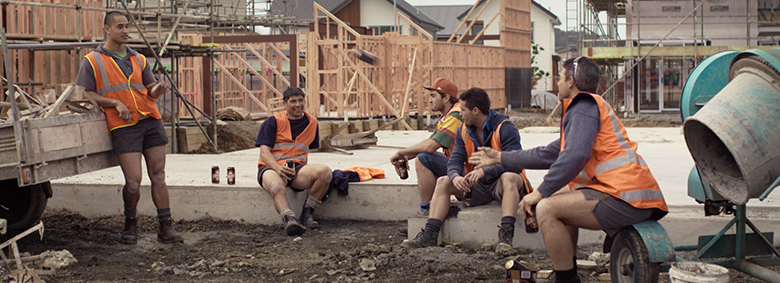Kiwis will be enjoying a safer festive season in 2014 thanks to the lower legal alcohol limits which came into force on 1 December.

A shot from the Builders ad in the Transport Agency’s ‘Legend’ drink-driving campaign.
Lowering the legal alcohol limit is a game-changer for road safety in New Zealand because it will save lives and prevent serious injuries caused by drunk drivers says Transport Agency Road Safety Director Ernst Zöllner.
"Drink-driving inflicts a huge amount of pain and suffering on New Zealand families and communities, and this change sends a clear message to those who would put themselves and others at risk by driving while affected by alcohol. Together with other recent changes including zero alcohol limits for teens, alcohol interlocks and new penalties for serious and repeat drink-driving offenders, this measure will make New Zealand roads safer for everyone. With the holiday season now upon us, the message is clear – if you’re going to drink don’t drive, and if you’re going to drive don’t drink.”
Legislation passed earlier this year means that from December 1 the legal alcohol limit for drivers aged 20 years and over was lowered from 400 to 250 micrograms of alcohol per litre of breath (or from 80 to 50 milligrams of alcohol per 100millitres of blood), bringing New Zealand law into line with the limits already in place in the majority of OECD countries. The alcohol limit for drivers under the age of 20 remains at zero.
Over the past few weeks the Transport Agency has been running a public information campaign to remind New Zealanders of the change, with promotional activity in pubs and bars along with television, radio and outdoor advertising.
From Sunday 30 November a new campaign started, based on the recent “Legend” series, which asks others to take on the responsibility of preventing others from driving after drinking. It will target provincial people who know that young guys are drinking and driving in their towns, and they want and expect ‘someone’ to do something about it. After all, these boys are out on the roads with others and could hurt someone they care about. The aim is to get the audience to realise that they are that ‘somebody’.